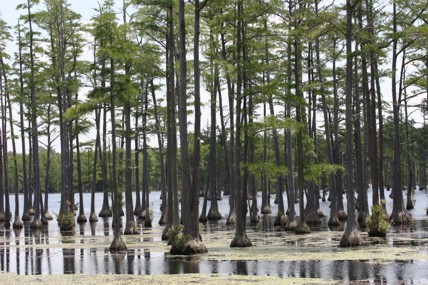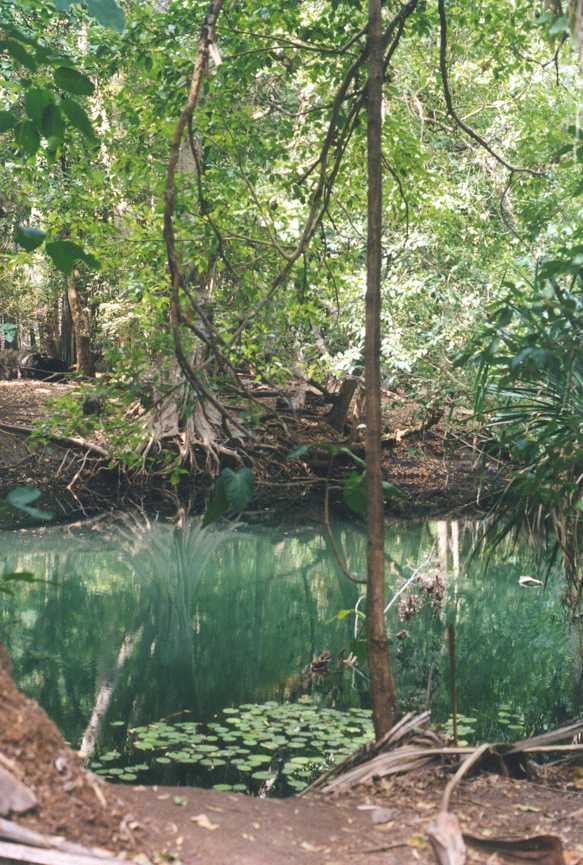Fieldwork
can be one of the most rewarding (but also among the most
trying) aspects of aquatic plant research. My field work has
taken me
to most parts of North America and also to Australia, Europe, and Mexico.
A nice thing about aquatic plants is that many species are cosmopolitan
in
their distribution, so there are plenty of reasons to travel when you
conduct research in this area. Many localities (such as those
pictured
above) provide extraordinary scenery. However, field work does
involve very long hours and tedious sample processing as well. Be
prepared to get hot, wet, muddy and to avoid getting eaten by
crocodiles.
It might surprise you to learn that unlike most
flowering plants,
the greatest diversity of aquatic plants is not in the tropics, but in
temperate regions. In fact, the northeastern United States
represents
one of the highest areas of aquatic plant diversity worldwide. At
least in the United States, aquatic communities generally are much
better preserved in northern areas where many pristine habitats still
exist. |







